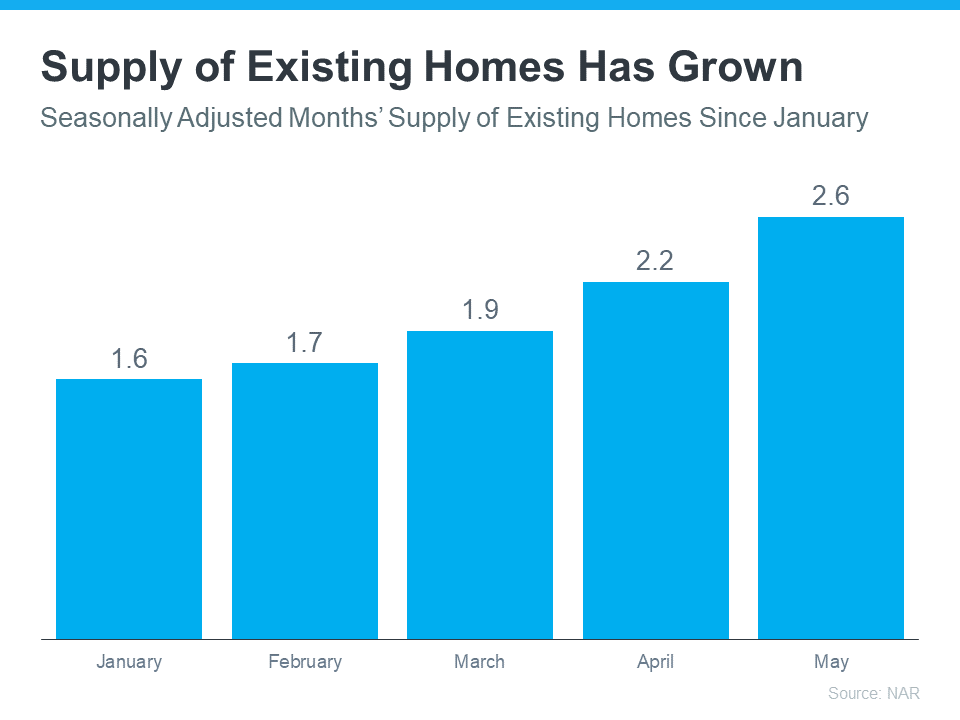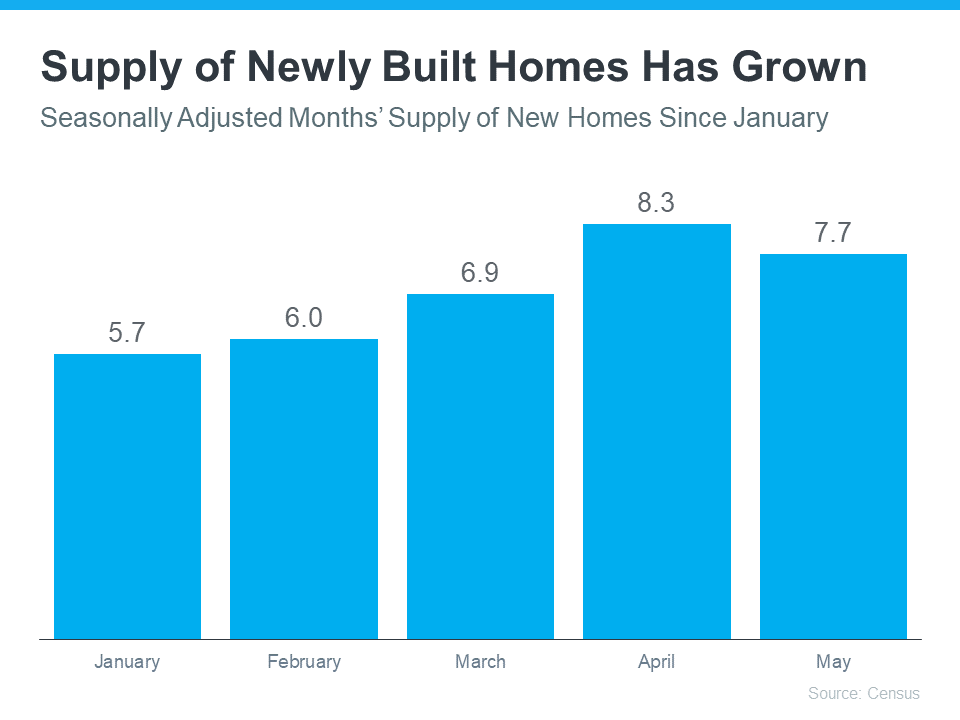Wondering Where You’ll Move if You Sell Your House Today?

If you put off your home search because you weren't sure where you'd move to after selling your home, now might be a good time to start looking again. This is due to the fact that the market is changing and more houses are becoming available for purchase as a result. As a result, there may be a better opportunity for you to locate a residence that will satisfy your existing wants. Here are a few options to think about.
Buying an Existing Home Can Give You That Lived-in Charm
The National Association of Realtors (NAR) reports that since the start of the year, the supply of existing homes—homes that have already been owned—has gradually climbed. According to the graph below, inventory levels are increasing, which is primarily because more properties are entering the market and sales are moving more slowly:
If you're looking for a property with lived-in appeal, the graph indicates that supply is increasing, which is wonderful news for you.
Realtor.com's chief economist, Danielle Hale, explains why more homeowners are listing their properties these days and contributing to the expanding supply of existing homes:
“Home sellers in many markets across the country continue to benefit from rising home prices and fast-selling homes. That’s prompted a growing number of homeowners to sell homes this year compared to last, giving home shoppers much needed options. We’ve seen more homes come up for sale this year compared to last year . . .”
The advantages of purchasing an existing home are numerous. Since older homes tend to have more character, many buyers seek out properties with history. Existing homes are frequently a part of established neighborhoods with mature landscaping that can increase your privacy and improve the appearance of your property.
Additionally, timing may be a factor. Instead of building a new home and waiting for construction to be finished, you can move into an existing property on the timeframe you and the sellers agree to. This is something to bear in mind, particularly if you need to relocate as quickly as possible.
Just keep in mind that even if more sellers are selling their houses, the overall supply is still limited. This implies that while looking for your next house, you'll have more options to consider, but you'll still need to be ready for a market that moves quickly.
Purchasing a Newly Built or Under Construction Home Means Brand New Everything
According to census data, there are more and more new homes for sale. It covers houses that are finished, nearly finished, and under construction. The availability of brand-new homes for sale has increased this year as well, as shown in the graph below:
You have the opportunity to design your ideal living area and adapt it to your way of life when you build a new home. This could entail anything from asking for energy-efficient solutions to asking for particular design aspects. Additionally, you'll benefit from brand-new windows, roofing, and other features. All of these can help you reduce your energy expenditures, which over time can result in sizable savings.
Another significant benefit of a newer home is the less maintenance required. You probably won't have as many little repairs to make in a new house, such as fixing leaky faucets, painting the shutters, and doing other odd work around the property. You'll also have warranty options with new construction, which can cover some of your initial expenditure.
Remember that buying a new house can need you to wait a long time before you can relocate. The National Association of Home Builders' (NAHB) Chief Economist and Senior Vice President for Economics and Housing Policy, Robert Dietz, explains:
“New single-family home inventory remained elevated at a 7.7 months’ supply. . . . However, only 8.3% of new home inventory is completed and ready to occupy. The remaining have not started construction (25.9%) or are currently under construction.”
You should explore this essential decision-making element with a reputable real estate advisor. To help you make the right choice, they will assist you in weighing all the advantages and disadvantages of both new and existing homes.


